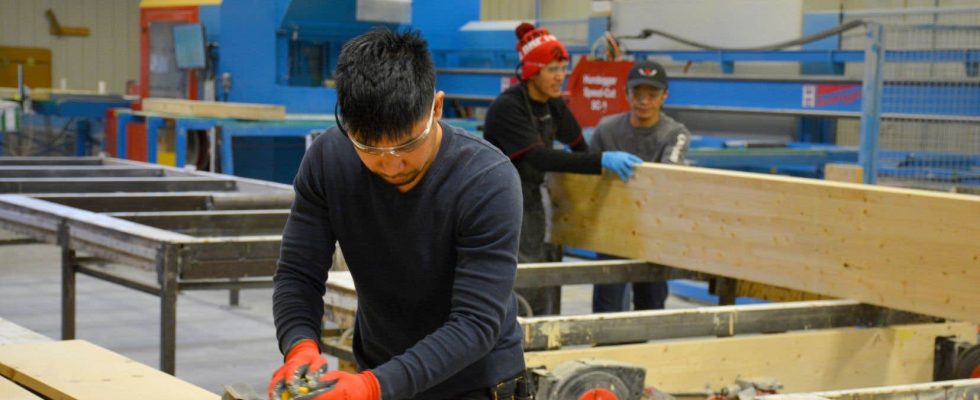Labor shortages and housing shortages are both hampering Quebec’s economic growth. An industry can pride itself on absorbing one while filling the other: the world of prefabricated houses.
Nicko Delosreyes arrived from the Philippines in February 2023 to fill a cabinetmaker position in the Produits Boréal factory, in Alma, Lac-Saint-Jean. About ten temporary workers like him cut pine and spruce logs, dye them, prepare them, then stack them while awaiting shipment for final assembly.
Impossible for him to work on a Quebec construction site, because he does not have certification from the Commission de la construction du Québec (CCQ). Except that in a prefabricated housing factory, you don’t need cabinetmaker certification to do this work.
“It’s very different, there is new knowledge, new technologies. But we are very flexible,” says this experienced cabinetmaker. “We can get the job done. We adapt. »
At full throttle
Thanks to these new arrivals, the Alma company is running at full capacity. High interest rates have dampened or delayed orders somewhat, but demand remains strong. Around 150,000 homes remain to be built in Quebec to alleviate the shortage, according to an estimate from the Association of Construction and Housing Professionals of Quebec.
Produits Boréal alone can produce eight “log” houses each week. 6-plex or 8-plex in prefabricated materials are also available. “It’s like Lego blocks,” explains the assistant general director, Audrey Coulombe. Nearly 60% of customers assemble their homes themselves, and on-site assembly can take just two weeks.
The prefabricated world seems ideal for absorbing immigrant workers while filling the housing shortage. On the one hand, companies build their workers’ housing themselves. On the other hand, they must train their new workers on the machinery anyway, whether they are foreign or local.
Produits Boréal is not the only company in the prefabricated field to fill its positions abroad. Up to 800 of the 2,500 employees in this branch of the construction sector come from elsewhere, according to data from Manufacturiers de structures de bois du Québec (MSBQ), which represents 85% of the industry.
In other words, at least 20% of the prefabricated construction workforce already rests in the arms of foreign labor.
Don’t cut corners
This foreign workforce does not have official approval from the CCQ, but it is just as rigorous, according to Gérald Beaulieu, general director of MSBQ.
“Regardless of who the worker is, quality control will need to be respected. MSBQ provides support for that,” he explains in an interview with Le Devoir.
Since December 2022, his team has been offering certification so that all roofs and floors coming out of prefabricated housing factories meet Canadian Standards Association standards. The group’s 40 factories will comply by the end of the year. An equivalent certification will arrive shortly for “prefab” walls.
Gérald Beaulieu estimates that the industry is capable of delivering 50,000 doors per year. Building houses during the cold season confers an undeniable advantage for developers. “Despite the housing shortage, we cannot work in winter. It’s absurd. »
When we rely on prefabricated construction, construction sites can move forward even in the cold, according to him. “If we could distribute [la construction] over 12 months, we could deliver 25% more housing. My members have all confirmed this to me. The aim is to finish the foundations before the end of December. »
Produits Boréal is proof that it is financing rather than the cold that slows down the ground breaking of new buildings, says Audrey Coulombe.
Five duplexes have just been shipped to Ontario’s Far North. And delivery is happening at breakneck speed. “We received the order on February 28; and March 18, everything was gone. »
This text is taken from Courrier de l’ économique.
